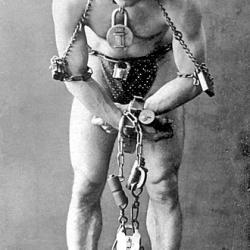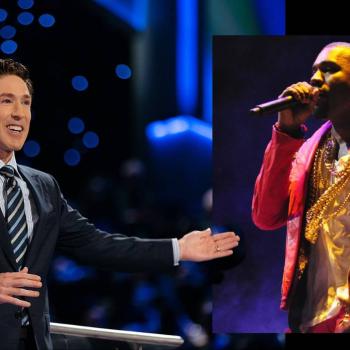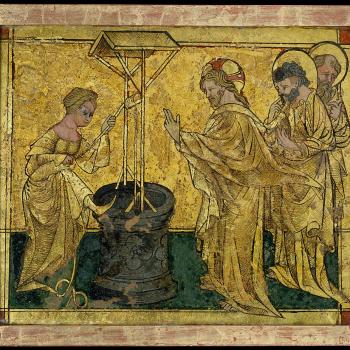Whether their conversions were voluntary or forced is a moot point. The assumption is that those who accept logic will adopt the most logically consistent view, and not act irrationally by insisting on a defeated position because of attachment to it. One must not be naïve, however. Not every highly educated person is consistently rational in his or her behavior. Moreover, local kings often officiated at such debates and awarded royal patronage to the winning parties and their institutions. Thus, considerations of financial support may also have influenced a change of religion or philosophy.
In Tibetan history as well, King Tri Songdetsen (Khri Srong-lde-btsan), in the late 8th century C.E., chose Indian Buddhism over the Chinese form after the former defeated the latter at the famous Samyey (bSam-yas) debate. Surely, political considerations also influenced the king's decision. A xenophobic faction had assassinated his father because of his close ties with China due to his Chinese queen, and a pro-China faction was again growing powerful in the court. The king and his Religious Council wished to avoid a repetition of the violent events of the past.
Conversion through Contests of Psychic Powers
Contests of psychic and extraphysical powers, both in India and Tibet, likewise ended in conversion. Just as cutting or burning equally attests to the authenticity of gold, defeating an opponent with logic or psychic powers equally demonstrates the superior truth of a teaching. Thus, the most plausible reason for the 13th-century C.E. Mongol ruler Khubilai (Kublai) Khan's adopting the Sakya tradition of Tibetan Buddhism is not because of the superior logic of its philosophical views. His grandfather, Chinggis Khan, had summoned Chinese Buddhist, Taoist, and Nestorian Christian clerics to his military camps to perform rituals for his long life and victory. Nevertheless, Chinggis was killed in battle fighting the Tanguts, a people who lived in the region between Mongolia and Tibet and who undoubtedly received their superior power from their reliance on the Tibetan Buddhist protector Mahakala. The biblical equivalent would be to explain military success in terms of the victors' having had God on their side. The Sakyapas were the most politically convenient Tibetan sect able to confer upon Khubilai Khan the secret weapon of Mahakala's might.
One needs to understand the picture of religious conversion portrayed in the Kalachakra literature within the context of these traditional contests of logic and psychic powers. In countries influenced by Indian civilization, a religion needed to prove that it had the highest truth by winning contests in one or both of these fields. It could not simply assert its supremacy as dogma and force others to accept it by the stretching rack or sword.
Conversion "For Others' Own Good"
Although the brahmans of Shambhala became convinced to receive the empowerment based on the Kalki's extraphysical powers and lines of reasoning -- although, in fact, no contest was held -- it is still a moot point whether they voluntarily agreed or were forced. After all, they did not gather to receive the empowerment on their own initiatives, but were summoned by the King and forced to listen to his arguments, "for their own good." All forced conversions, however, are ostensibly for a candidate's own good. And such explanations as that by the Second Kalki in his commentary to his father's work, "the Kalki saw that the brahmans were ripe for forming one caste," can be used by leaders of any religion or politico-economic system to justify conversion by force.
The 15th-century C.E. Tibetan Gelug scholar Kaydrubjey (mKhas-grub rje), however, explains in his Kalachakra commentary that Manjushri Yashas was not forcing the Hindu castes to give up their religious and social customs and to convert to Buddhism. No one has the right to do that to any group. The First Kalki's intention was for the people to examine their behavior to see if it accorded with the pure teachings of the Vedas. If it did not, they needed to correct it. To face any threat to society, followers of all religions need to combine in spirit and adhere to the good intentions of each of their creeds.
Kaydrubjey's comment, then, implies that being ripe for forming one caste is not equivalent to being ripe for converting to Buddhism. Forming one caste would be for the people of Shambhala's own good in a sociopolitical sense, not specifically in a spiritual sense. The First Kalki was pressing for religious harmony and unity of purpose, not religious uniformity, as the means to ward off threats to society.
Nevertheless, the brahmans who received the empowerment did constitute the majority of the audience to whom Manjushri Yashas gave the Kalachakra teachings. Thus, although it is unnecessary and even inappropriate for everyone to convert to Buddhism, nevertheless some followers of other religions may be "ripe" for that as well. Is that still conversion, but just in a cleverly rationalized form? After all, Manjushri Yashas assumed the title Kalki, the name of the tenth and final avatar (incarnation) of the Hindu god Vishnu. One could easily construe this as a clever tactic for winning the allegiance of Hindus.




